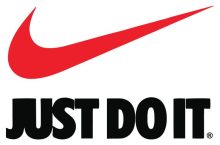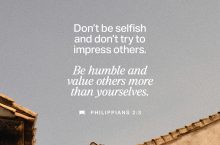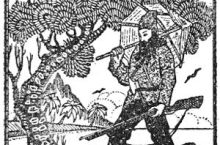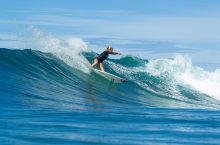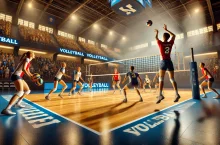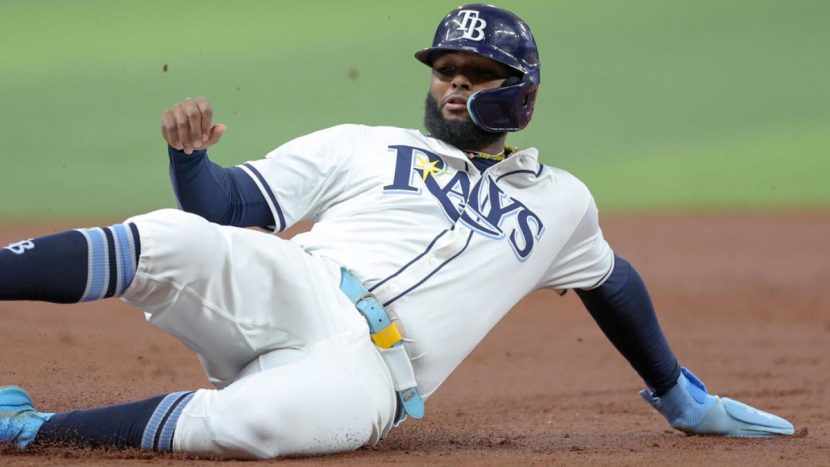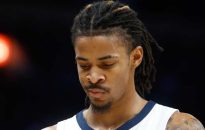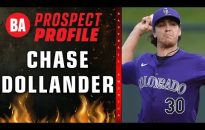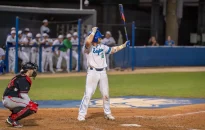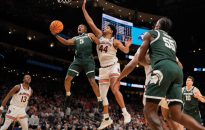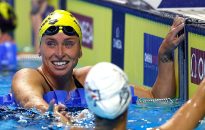Here’s the thing, though: Ian Happ and Brandon Nimmo are going several rounds later, and as you can see from their point-per-game averages, they’re similarly impactful. (Steven Kwan’s point-per-game average is even higher, I realize, but that’s because his skill set is optimized for points scoring. In 5×5, he’s no great shakes). You could argue […]


Here’s the thing, though: Ian Happ and Brandon Nimmo are going several rounds later, and as you can see from their point-per-game averages, they’re similarly impactful. (Steven Kwan’s point-per-game average is even higher, I realize, but that’s because his skill set is optimized for points scoring. In 5×5, he’s no great shakes). You could argue Happ and Nimmo are batting average liabilities, but that’s about it. And by the way, I’m not sure Nimmo actually is. He hit a career-low .224 during an injury-plagued 2024, but he hit no less than .274 in any of the previous four seasons. He might be my favorite value pick in the entire outfield.I’m fine with any of these players at his going rate. I’ve recently decided that I prefer Bobby Witt to Shohei Ohtani in 5×5 scoring and Judge to Ohtani in points scoring, but that’s less because of Ohtani’s DH-only status than concerns over his surgically repaired shoulder (not that there are concrete concerns, but out of a general abundance of caution). I’d prefer if Schwarber and Ozuna came at a similar discount to DH-onlys past and will probably push it to see if I can get them outside the top 60, but it generally hasn’t been happening for me.It’s completely stupid that I can call Jurickson Profar a sleeper after a year in which he went from being a non-entity in Fantasy to a top-15 outfielder, but when nobody wants him, it’s like it never happened. I’m skeptical, too, but you can buy my belief with a steep enough discount. Joshua Lowe and Nolan Jones had that sort of season two years ago only to crash hard last year. It’s reasonable to gamble on them bouncing back, but I’ll admit it hasn’t been a high priority for me.But enough ragging on Crow-Armstrong. Two other up-and-comers who generate enthusiasm at about the same point in the draft are Dylan Crews and Jasson Dominguez, who I think have similar upside. I prefer Crews just because he was so prolific as a base-stealer in his debut that it makes for a nice safety net if the bat doesn’t come through, but I would accept either as my third outfielder. Fourth would be even better.
Had to scroll for a while there, didn’t you? That’s right: Outfield is Stud Central. I don’t think I’m pushing the envelope with any of these 13 either. The one drafted second-latest, Jazz Chisholm, was an obvious stud at the other position where he’s eligible, third base, and the one drafted latest, Jackson Merrill, to me is on equal footing with his fellow 21-year-old sophomore, Jackson Chourio. Though I do share a preference for Chourio, who figures to have a stolen base advantage (though may be not as big as people think), Merrill is the better pure hitter. They shouldn’t be separated by 11 spots.In fact, I wouldn’t say I’m disinclined to take any of these players at his going rate. The two who would most cause me to hesitate are Jarren Duran, a late bloomer who broke out with a fairly unconventional stat line last year, and Ronald Acuna, who’s coming off a torn ACL and may not be ready until late April. But I don’t have any concrete concerns for Duran, just general skepticism, and I think we’ll know a lot more about Acuna’s standing by the time drafting begins in earnest.I actually don’t like Pete Crow-Armstrong at his going rate, and as intimated earlier, I feel like I have a higher-percentage chance at the same numbers with Cedric Mullins 50 picks later. Yes, Crow-Armstrong showed signs of being a possible 20-homer, 30-steal guy with his performance over the final two months, but the poor plate discipline and exit velocity trends still concern me. Another knockoff alternative would be Parker Meadows, who’s going even later than Mullins and was stronger to the finish than Crow-Armstrong, batting .296 with six homers, five steals and an .840 OPS over the final two months.
I know that may be disorienting after so many years of me driving home the need to draft one position or another early, but embrace the freedom, I guess.And so there was pressure to gobble up as many outfielders as you could stand early in drafts, recognizing that if you weren’t deliberate about it, you’d be in for a nightmare scenario, particularly in those five-outfielder formats.
I call these “sleepers,” but it’s less an expression of my own personal enthusiasm for them than a recognition that we don’t really know what they’ll do in 2025. Maybe “dice throws” would be a more appropriate for them, and the same goes for the “sleepers” in all of my other position strategies articles.
There are obvious injury risks, too, namely Mike Trout and Christian Yelich, but you can see from their point per-game averages that they’re still studly when healthy. The cost for Trout has never been lower, so I’m tempted to gamble on the possibility that he reverses the injury trend (which does happen sometimes). I think I can only justify it in a shallower league, though, where the penalty for missing with a pick isn’t so severe. I was fully on board with drafting Yelich earlier in the offseason, ranking him almost 60 spots ahead of the consensus, but the reports of him not being fully ready for the start of spring training make me a little more cautious. I still think the back surgery could turn out to be a boon, though. He had been playing through back pain off and on for years.*minor-league stats *minor-league stats
^2024 stats
†combined majors and minors
At this time a year ago, outfield was thought to be the scarcest position of all, which was doubly frustrating because it’s also the one offensive position where, across all formats, multiple players are required. In a best-case scenario, it’s three, but oftentimes, it’s as many as five.Booooring. OK, no, I actually like some of these guys quite a bit. You can see from the ADP that there’s a drop-off about halfway through, and indeed, Nick Castellanos and Taylor Ward ain’t winning no one a championship in the Year of our Lord 2025. But they’re reasonable enough choices to fill out a five-man outfield, which is why I’ve slotted them here.*minor-league stats
Now? It’s not so bad. Between emerging studs like Jackson Chourio and Jackson Merrill and unexpected breakouts like Jarren Duran, Brenton Doyle, Lawrence Butler, and Jurickson Profar, there’s clearly enough talent to go around in a three-outfielder league. Even in a five-outfielder league, it’s passable.Looking even deeper, Andy Pages could surge up the rankings this spring if the Dodgers decide he’s their guy in center, and while platoon issues likely prevent Trevor Larnach and Max Kepler from being impact players in Fantasy, I like their skill sets enough to keep an eye on them at least.
So while I think as a general guideline, it makes sense to prioritize infield over outfield in 2025 drafts — those positions are weaker on the whole, particularly first and second base — I wouldn’t say I’m dead set on it. In fact, my biggest takeaway as I work my way through these position strategy articles is how unintentional I am at every position. This player pool is just the perfect storm of depth and scarcity misalignment, making the ideal path unique to each particular draft.
In fact, I’d say that, among hitter positions, only shortstop outshines outfield in terms of depth, and the same goes for upside. Outfield is by nature a larger position than any singular infield spot, but it’s still telling that six of the first 12 and 11 of the first 24 players drafted on average are outfielders. It so dominates the early stages of a draft that to avoid taking an elite outfielder would be to thread a needle.
One additional lower-end choice: Jung Hoo Lee, Brendan Donovan, J.J. Bleday, Willi Castro We’re in the home stretch now. TJ Friedl and Michael Conforto are among my top sleeper picks for this year, and I’m surprised they’re going late enough that I can group them with the deep sleepers. Friedl was a must-start player with his 18 homers and 27 steals two years ago, and while he struggled through an injury-plagued 2025, he affirmed the most questionable part of his skill set, which was power. Conforto I like even more. I think he had a bounce-back season last year, but it was concealed by him playing half his games at Oracle Park, where he hit just three of his 20 home runs. This past couple offseasons have shown that the Dodgers can have basically whomever they want, and well, they wanted him.Aaron Judge forms a triumvirate with Shohei Ohtani and Bobby Witt at the start of drafts, and I think you could make an argument for taking any of them first overall (which I do for Judge in Head-to-Head points leagues). The next two outfielders by ADP, Juan Soto and Kyle Tucker, both changed venues for the worse this offseason, but I don’t think it presents an obstacle for either one, given the way they impact the ball. Julio Rodriguez and Corbin Carroll were consensus top-four picks last year, making them terrific values at 16 and 10, respectively. Both got off to miserable starts but came around by season’s end.
None of these players is outfield-eligible, but since there aren’t enough DH-onlys to justify their own strategy guide, I’ve shoehorned them here. With the exception of Kyle Manzardo, who I also featured in my first base strategies, the position where these players have the best chance of becoming eligible is the outfield — and, in fact, that’s expected for Brent Rooker sooner or later. He’s the least proven of the top four, who are the ones we really care about for Fantasy, so I suspect the promise of eventual outfield eligibility is the only reason he’s able to hang with mainstays like Kyle Schwarber or Marcell Ozuna.So what do I say? The players whose downside risk concerns me the most are Brenton Doyle, who I featured in my Busts 1.0, and Luis Robert, who was an outright disaster last year. Perhaps Robert deserves a pass because of his fairly strong track record and the fact that he missed the first two months with a strained hip flexor, but the numbers almost read to me like his heart wasn’t in it — and on that White Sox team, I couldn’t blame him. Maybe that’s too much armchair psychology for your liking, but when the time comes to draft him, I’m pleased to discover that I have other needs.
Roman Anthony is the consensus top prospect in baseball (on lists where Roki Sasaki doesn’t count, anyway) and will be a popular choice to stash in the hopes of an early season call-up. Evan Carter and Jordan Walker are post-hype sleepers and certainly worth a gamble at their going rate, but I think Lars Nootbaar’s chances for a delayed breakthrough are even greater. His underlying data remains stellar, and he’s reportedly doubled down on his efforts to elevate the ball more.Speaking of outfield values, Cedric Mullins doesn’t get his due, even if you just take his 2024 numbers at face value (18 homers, 32 steals). But I’ll note that he hit .277 with an .834 OPS over his final 87 games, which is a level of production that we’ve seen him sustain over a full season before. I don’t see the point in drafting him in points leagues, but to add a bunch of steals without sacrificing power late in a 5×5 draft, he’s great.
Oneil Cruz and Michael Harris I don’t think are bad, just kind of overrated, and in that price range, I’m more likely to bet on sophomores Wyatt Langford and James Wood meeting their upside. Both are among my breakout picks for 2025, as is Lawrence Butler. He doesn’t match their pedigree and, therefore, has more downside risk, but it’s hard to ignore what he did in the second half last year. His ADP is about at the tipping point for me.As the header implies, these are other deserving starters with a chance to break through as studs, which doesn’t mean they should universally be drafted ahead of the other deserving starters who don’t have stud upside (see below). There’s an obvious tradeoff between safety and upside that you’ll have to navigate for yourself. Or you could just do as I say.
The Base-Stealers
Here’s where I’d normally provide a wealth of information about all the viable base-stealers at the position in question, but there are so many in the outfield that I have to limit that information to how many bases each of them stole last year. It may not fully express the potential for everybody, particularly those who stole only a handful (most likely because of time lost to injury), but it’ll give you a close enough approximation. At the very least, I would say that 20 steals isn’t out of reach for any of these players.
Of greater interest to me are … well, the four that are going the highest here: Teoscar Hernandez, Anthony Santander, Bryan Reynolds and Seiya Suzuki. They’re ranked correctly, I think, with Reynolds edging out Suzuki for durability reasons. I’d need Hernandez or Santander at a discount, probably, just because quality infielders are available at the point when they’re normally going off the bored, but I’m always thrilled to draft Reynolds or Suzuki as a third outfielder. Sure, they lack the upside of some of those I mentioned in the previous group, like Roberts and Trout, but you need some guys you can just set and forget.
